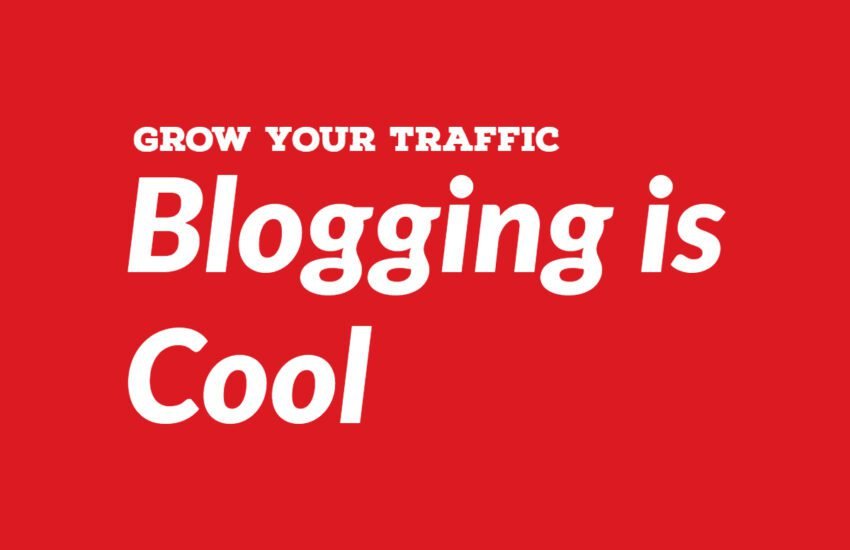9 Pages commonly found on blogs and their purpose
When it comes to creating a blog, there are certain pages that are commonly found across various blogs.
Common Pages
These pages serve different purposes and provide important information to the readers. In this article, we will explore some of the most common pages found on blogs and discuss their significance.
About Page
The About page is where bloggers introduce themselves and provide information about their background, expertise, and the purpose of their blog.
It allows readers to get to know the person behind the blog and establishes credibility and trust.
Contact Page
A Contact page is essential for readers to get in touch with the blogger. It typically includes a contact form or an email address through which readers can send inquiries, feedback, or collaboration requests. This page helps to foster engagement and build relationships with the audience.
Blog Page
The Blog page is the heart of a blog, where all the published posts are displayed.
It serves as an index or archive of the blog’s content, allowing readers to easily navigate through the various articles and find the information they are looking for.
Home Page
The Home page is the main landing page of a blog. It provides an overview of the blog’s content, highlights the latest or featured posts, and often includes a brief introduction or welcome message.
The Home page is designed to make a strong first impression and encourage visitors to explore further.
Privacy Policy
A Privacy Policy page is crucial for blogs that collect any form of personal information from their visitors, such as through newsletter sign-ups or comments.
It outlines how the blog collects, uses, and protects user data, ensuring transparency and compliance with privacy laws.
Terms and Conditions
A Terms and Conditions page sets out the rules and guidelines for using the blog.
It covers aspects such as copyright, disclaimers, commenting policies, and any other terms that readers must adhere to when accessing or interacting with the blog.
This page helps protect the blogger’s rights and clarifies the responsibilities of the readers.
FAQ Page
A Frequently Asked Questions (FAQ) page addresses common queries or concerns that readers may have.
It provides answers to frequently asked questions, saving both the readers and the blogger time by addressing common issues upfront.
This page can help improve user experience and reduce the need for repetitive inquiries.
Subscribe Page
A Subscribe page encourages readers to join the blog’s mailing list or subscribe to updates.
It often includes a sign-up form and highlights the benefits of subscribing, such as receiving exclusive content, notifications of new posts, or special offers.
This page helps to grow the blog’s audience and maintain engagement with loyal readers.
Affiliate Disclosure Page
An affiliate disclosure page is a statement on a website or blog that informs visitors about the site’s participation in affiliate marketing programs. In affiliate marketing, website owners earn a commission by promoting products or services through affiliate links.
The affiliate disclosure page typically discloses this relationship between the website owner and the companies whose products or services are promoted.
The purpose of an affiliate disclosure page is to be transparent with visitors about any potential bias or financial incentive behind the recommendations or endorsements made on the website.
It helps to maintain trust and credibility with the audience by ensuring they understand the nature of the business relationships involved.
The content of an affiliate disclosure page may include details such as the types of affiliate programs the website participates in, how affiliate links are used within the content, and a statement affirming the website’s commitment to providing honest and unbiased recommendations to its audience.
Additionally, the page may outline the potential benefits to visitors, such as discounts or special offers, associated with using affiliate links.
Disclaimer
A Disclaimer page is particularly important for blogs that provide advice, recommendations, or opinions.
It clarifies that the information provided on the blog is for informational purposes only and should not be considered as professional or legal advice.
This page protects the blogger from any liability that may arise from the use of the blog’s content.
Conclusion
These are some of the most common pages found on blogs and their respective purposes.
Each page serves a specific function in providing information, establishing credibility, fostering engagement, or protecting the blogger’s rights.
When creating a blog, it is important to consider including these pages to enhance the overall user experience and meet the needs of the readers.
Frequently Asked Questions
1. **What are the essential pages commonly found on blogs, and why are they important?**
Essential pages commonly found on blogs include:
– Home Page: Introduces visitors to your blog and provides an overview of your content.
– Blog Posts: Individual articles or posts covering various topics relevant to your audience.
– About Page: Provides information about you or your brand, including your background, mission, and values.
– Contact Page: Offers ways for visitors to get in touch with you, such as through a contact form or email.
– Services/Products Page: Highlights the products or services you offer and how visitors can benefit from them.
These pages are important for establishing credibility, providing valuable information, and encouraging engagement with your audience.
2. **What should I include on my blog’s home page to make it engaging and informative?**
To make your blog’s home page engaging and informative, include:
– A clear and compelling headline or tagline that communicates the value proposition of your blog.
– Featured blog posts or categories to showcase your content and help visitors find what they’re looking for.
– Visual elements such as images or videos to enhance aesthetics and draw attention to key content.
– Calls-to-action (CTAs) to encourage visitors to explore further, subscribe to your newsletter, or follow you on social media.
– Navigation menu with links to essential pages such as About, Blog, Contact, and Services/Products.
By incorporating these elements, you can create a home page that captures visitors’ attention and encourages them to explore your blog further.
3. **What information should I include on my blog’s About Page to build trust and credibility?**
On your blog’s About Page, include:
– Your background, including your name, photo, and relevant experience or expertise.
– The mission and values of your blog, including why you started it and what you hope to achieve.
– Information about your team or contributors, if applicable, to humanize your brand and build connections with your audience.
– Testimonials or social proof from satisfied customers or clients to demonstrate credibility and trustworthiness.
– Contact information or links to your social media profiles to encourage further engagement and interaction.
By providing this information, you can build trust and credibility with your audience and establish yourself as a reputable authority in your niche.
4. **What should I include on my blog’s Contact Page to make it easy for visitors to get in touch?**
On your blog’s Contact Page, include:
– A contact form that allows visitors to send you messages directly from your website.
– Your email address for visitors who prefer to reach out via email.
– Links to your social media profiles to provide additional ways for visitors to connect with you.
– Optional fields for visitors to provide their name, email address, and message to help you better understand their inquiries.
– Information about your availability and response time to manage visitor expectations.
By including these elements, you can make it easy for visitors to get in touch with you and encourage communication and interaction.
5. **What content should I include on my blog’s Services/Products Page to promote offerings effectively?**
On your blog’s Services/Products Page, include:
– A description of the services or products you offer, including features, benefits, and pricing information.
– Visual elements such as images or videos to showcase your offerings and help visitors visualize their benefits.
– Testimonials or case studies from satisfied customers or clients to provide social proof and build trust.
– Calls-to-action (CTAs) prompting visitors to learn more, schedule a consultation, or make a purchase.
– Contact information or links to additional resources for visitors who have questions or need more information.
By providing this content, you can effectively promote your services or products and encourage visitors to take action.
6. **How can I optimize my blog’s About Page for SEO?**
To optimize your blog’s About Page for SEO, include:
– Relevant keywords related to your niche or industry in the page title, headings, and body content.
– Descriptive meta tags, including a meta title and meta description, to improve visibility in search engine results.
– Internal links to other relevant pages on your blog to increase engagement and encourage visitors to explore further.
– High-quality, original content that provides valuable information and addresses the needs and interests of your audience.
– Structured data markup, such as schema.org markup, to provide additional context to search engines and improve the likelihood of appearing in rich snippets.
By incorporating these SEO best practices, you can improve your blog’s About Page’s visibility and attract more organic traffic.
7. **What should I include on my blog’s Privacy Policy Page to comply with legal requirements?**
On your blog’s Privacy Policy Page, include:
– Information about the types of data you collect from visitors, such as personal information, cookies, or usage data.
– How you use and process the collected data, including purposes such as analytics, advertising, or user experience improvement.
– Details about third-party services or partners you may share data with, such as advertising networks or analytics providers.
– Your policies regarding data retention, security measures, and user rights, such as opt-out options or data deletion requests.
– Contact information for visitors to reach out with questions or concerns about their privacy.
By providing this information, you can demonstrate transparency and compliance with legal requirements regarding data privacy and protection.
8. **What content should I include on my blog’s Resources Page to provide value to visitors?**
On your blog’s Resources Page, include:
– Links to valuable tools, software, or apps related to your niche or industry that can help visitors solve problems or achieve their goals.
– Recommended books, podcasts, or courses that provide additional learning and development opportunities for your audience.
– Free downloadable resources such as templates, guides, or checklists to help visitors implement the advice and strategies you share on your blog.
– Links to your favorite blogs, websites, or influencers in your niche for further reading and exploration.
– Calls-to-action (CTAs) prompting visitors to subscribe to your newsletter, follow you on social media, or explore your other offerings.
By curating and sharing valuable resources, you can provide additional value to your audience and establish yourself as a trusted source of information and expertise.
9. **How can I encourage engagement on my blog’s Comments Page to foster community and interaction?**
To encourage engagement on your blog’s Comments Page, consider:
– Responding promptly and thoughtfully to comments from visitors to show appreciation for their input and encourage ongoing discussion.
– Asking questions or prompting feedback within your blog posts to encourage readers to share their thoughts and opinions.
– Creating a welcoming and inclusive environment by moderating comments and fostering respectful dialogue among visitors.
– Highlighting and featuring standout comments or contributions from visitors to recognize and reward active participation.
– Encouraging visitors to subscribe to comment notifications or follow-up replies to stay engaged with ongoing discussions.
By actively engaging with your audience and fostering a sense of community and interaction, you can enhance the overall experience of your blog and encourage repeat visits and loyalty.
10. **How can I optimize my blog’s Search Page to help visitors find relevant content easily?**
To optimize your blog’s Search
Page, consider:
– Implementing a user-friendly search bar prominently on your page to make it easy for visitors to enter keywords and find relevant content.
– Providing advanced search filters or categories to help visitors narrow down their search results based on specific criteria such as date, topic, or content type.
– Displaying clear and relevant search results with descriptive titles, excerpts, and thumbnail images to help visitors identify relevant content at a glance.
– Offering related or suggested content based on the visitor’s search query to encourage further exploration and engagement with your blog.
– Monitoring search queries and analyzing user behavior to identify trends, patterns, and opportunities for improving search functionality and content discoverability.
By optimizing your blog’s Search Page, you can help visitors find relevant content easily and enhance their overall browsing experience.


